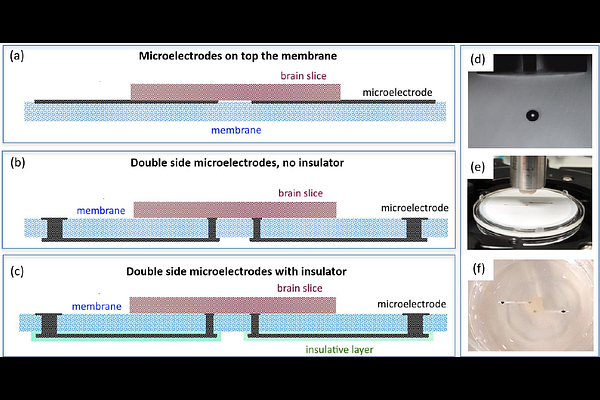Nanoporous Microelectrodes for Neural Electrophysiology Recordings in Organotypic Culture

Nanoporous Microelectrodes for Neural Electrophysiology Recordings in Organotypic Culture
Lutsyk, P.; Goswami, D.; Greenhill, S. D.
AbstractOrganotypic cultures, specifically brain slices, have been used in neuroscience studies for many years to prolong the lifetime of the biological tissue outside of the host organism. However, the cultures must be kept in a sterile environment, maintaining supply of gas/nutrients for tissue survival and physiological relevance. Electrophysiological recordings from cultured tissue are challenging as the conventional approaches implicate a compromise on biological stability or environmental integrity. In this article, a novel approach has been used to design and print nanoporous microelectrodes on culture wells enabling in situ recording of electrophysiological neural activities. Optimized ink formulations are developed for conductive nanocarbon microelectrodes, and furthermore, fluoropolymer (polytetrafluoroethylene-based AF2400) ink has been inkjet printed for the first time acting as an insulator layer for microelectrodes. To keep the biocompatible nanoporous structure of culture wells, the microelectrodes have been printed on the bottom of the culture cells and only small connector pads have been produced on top of the culture membrane. Neural activity has been recorded by such a microelectrode structure for rodent brain slices cultured for three weeks. Furthermore, aerosol jet printing has been used for printing of nanocarbon microelectrodes allowing to produce much smaller size features compared to the inkjet printing.